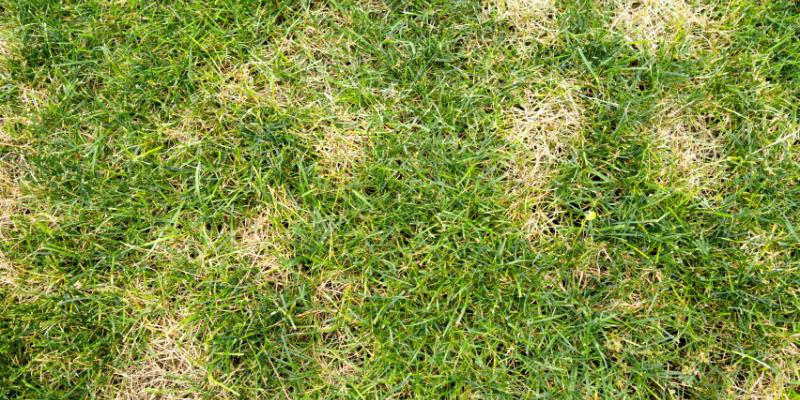Last updated: 09/01/2021
Estimated read time: 3 minutes
Summer is supposed to be your lawn’s time to shine, but seasonal diseases can often get in the way. None are more appropriately named, and few are as destructive as Summer Patch Lawn Disease. But, don’t panic—we’re here to arm you with the knowledge you need to fight back against this deadly lawn ailment and keep it from affecting your yard at all.

What is Summer Patch Lawn Disease?
At first glance, it’s easy to mistake summer patch lawn disease for the less severe brown patch. Both diseases cause areas of discoloration on your lawn, but while brown patch causes circular disfigurements, summer patch covers your property in irregularly shaped areas of dead-looking grass. Knowing how to tell the two conditions apart is important—brown patch is easily managed, and grass typically recovers from an infection, but summer patch will often cause your grass to die!
All turfgrass varieties are vulnerable, but bluegrass is particularly susceptible to the worst symptoms of summer patch disease. So if you have a bluegrass lawn in your yard, monitoring and swift action are that much more critical.
What causes Summer Patch Lawn Disease?
Like Brown Spots, Summer Patch lawn disease is caused by a fungus. In this case, though, it results from the much more aggressive and malignant Magnaporthe (Magnaporthiopsis) Poea fungus. Lawns, golf courses, and sports fields are all common targets, so knowing the signs of Summer Patch is critical when maintaining any of them.
How to Treat Summer Patch Lawn Disease
Summer Patch is best prevented by proper lawn maintenance. While it can be treated by an experienced professional, a well-kept lawn will have a much greater chance of survival with minimal damage when faced with an infestation. Some of the most effective maintenance you can provide is:
- Lawn aeration: Properly done, lawn aeration can prevent a wide variety of fungi from spreading across your lawn. It limits moisture levels and gives your grass the edge in nutrient access, ensuring that your yard is at its healthiest if infection occurs.
- Proper mowing: Mowing to the correct height with a sharp blade stimulates your grass’ growth, preparing it to fight off infection when necessary. In addition, a mower with proper clippings catch will prevent freshly cut grass from decomposing on your lawn, limiting opportunities for fungal growth.
- Overseeding: Bolstering your lawn strategically with overseeding will help your grass simply outgrow most fungi. The healthier and denser your yard is, the fewer resources are available to allow the fungus to grow and spread.
- Careful watering: Regular, adequately spaced out, heavy waterings are the best way to ensure proper moisture levels on your lawn while limiting excess. This way, your grass has all of the water needed to grow while minimizing the amount of moisture leftover and preventing fungal growth.
When summer patch disease does strike your lawn, aggressive fungicide treatments combined with precision fertilizer applications are the best course of action. This strategy, combined with overseeding to replace any dead or damaged grass, is recommended to limit the spread of the fungus while treating its long-term effects.
Have a Question About Lawn Care? Ask the Experts!
Having a lawn care problem that you can't seem to solve? Send your question to our expert technicians and get the answers you need to get a healthy, beautiful lawn.
Ask a Lawn Care QuestionConsider Professional Lawn Care
With a severe disease like Summer Patch, DIY approaches rarely achieve lasting results, so professional help is the way to go. Instead, call the professionals to learn how they can help you get rid of summer patch lawn disease.
Get a FREE Lawn Care Quote Now
Quick Quote Form
"*" indicates required fields
